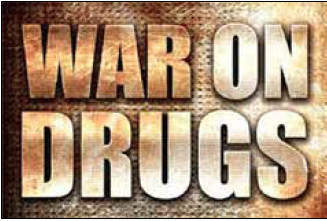Community News
After 40 Years, is There a Victor in the “War on Drugs?”

The 40-year War on Drugs was examined during the May 24, 2018 BRIC-TV #BHEARD Town Hall. Dubbed “Whose War on Drugs?”, Brian Vines moderated a panel consisting of:
Eric Gonzalez, Brooklyn District Attorney; Kassandra Frederique, NYS Director for the Drug Policy Alliance; Chino Hardin, Field Director of the Center for NuLeadership on Urban Solutions;
Tom Robbins, Investigative Reporter for the Village Voice and Contributing Writer for The Marshall Project; Dr. Hillary Kunins, an Assistant Commissioner for the NYC Department of Health & Mental Hygiene.
Brian Vines explained that The War on Drugs was so named and initiated by President Richard Nixon’s Administration in the 1970s. Presently, $51 billion is allocated annually to this effort. Vines asked the panel to answer who are the combatants of this war? D.A. Gonzalez stated: “The War on Drugs is a failed effort. I have personal knowledge of people being cycled through the criminal justice system due to drug use. This is because the justice system gets the conviction but there is no help with the addiction.”
Kassandra Frederique said it is the people of color of lower incomes who lack access to health care and education, and it is “whiteness” that created the war.
Chino Hardin contended “The War on Drugs” is a war on Black, Brown and poor folks. After 40 years, there are no solutions to the distribution and illegal sale of [these controlled substances].
Tom Robbins turned the tables a bit by asking, “Who is the bad guy?” At this stage of the struggle, new battle lines exist in that it was clear previously that the distributors of the drugs were the bad guys. Now the green light has been given to the pharmaceutical companies; therefore, the lines are blurred. Robbins is alluding to the fact that pharmaceutical salespeople had promoted opioids as good medicine that was not addictive.
Dr. Kunins said, “There is a need to build whole people and whole communities. Blocking access to health care, medicine and education exacerbates the problem.”
One portion of the Town Hall focused on the considerations into legalizing marijuana and another portion examined narcotics. D.A. Gonzalez, who has more than twenty years in developing drug policy, stands behind decriminalizing marijuana sales and usage. People who have been arrested, imprisoned and/or supervised by the NYC Department of Probation would be recompensed for time in jail or prison and their criminal records would be expunged.
Ms. Frederique stated there was a developing legal economy in marijuana–medical marijuana and recreational marijuana. Frederique’s concern is that people of color will get into this legal industry. Currently, there are nine US states and the District of Columbia that permit adults over the age of 21 years to smoke the plant. There are 29 states and the District of Columbia that permit the sale of medical marijuana at designated businesses. However, what persists, according to Frederique, is the belief that marijuana is the “gateway drug” to other mood-altering substances. The “Marijuana Battle” within the “War on Drugs” created a generation of people who were raised by their grandparents or in custody of the NYC Administration for Children’s Services. Further, adults are having difficulty obtaining legitimate work with livable wages due to being arrested for possessing small amounts of marijuana.
During this portion of the event, a number of people came to the microphones to object to the smoking of marijuana in public spaces. They objected to the aroma of burning marijuana. Unlike liquid and solid substances, marijuana pervades wide areas. The panel of experts acknowledged that fact.
The #BHEARD Town Hall then transitioned to looking at narcotics. This was done by following a man named Mike who devoted himself to reducing the risks of narcotic usage by operating a needle exchange program. Mike is a middle-aged African-American man who walks through Washington Heights’ woodlands to detect areas where drug use occurs. He carefully collects used syringes to put them in a storage container. Mike leaves sealed packages of unused syringes in places he believes drug users will detect.
Mike came upon a man in the woods who was under the influence of a drug. He tried to engage the man in a conversation to learn of his circumstances. His tone of voice and word choices was accepting rather than harsh or judgmental. Mike left a few packaged syringes with the man. Mike’s compassion comes from having been an active user of narcotics. Dr. Kunins and Tom Robbins commented on the slang terminology associated with using addictive substances. Words such as “junkie,” “crackhead” and “shooting gallery” are seen as effacing by Kunins and Robbins.
Dr. Kunins called out health professionals to treat drug users with dignity and follow the treatment model rather than the punishment model. Kunins realized that professionals in the medical and health fields can be as stigmatizing and punishing as criminal justice. An audience member asked for a strategy for teaching children about drugs. Dr. Kunins suggested rather than discuss pharmacology and watching dramatizations of withdrawal systems, a model that encompassed developing emotional intelligence, negotiating skills, cultivating self-esteem and other human development techniques were affective in keeping children and adolescents far less inclined toward drug experimentation.

